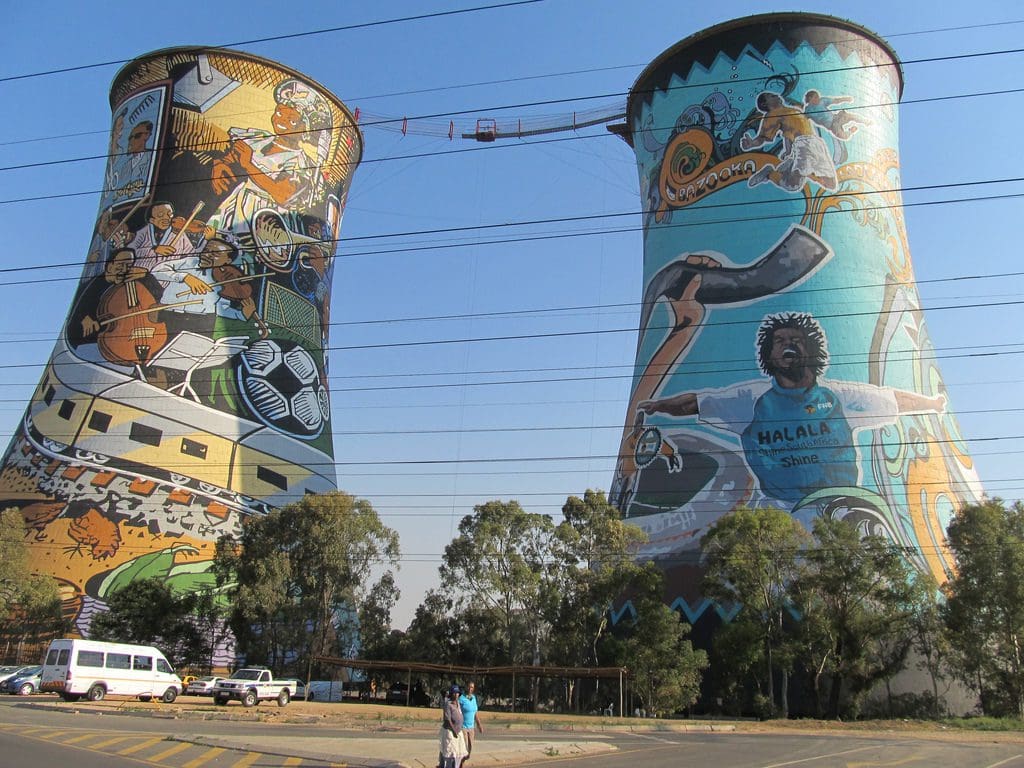
Johannesburg, often affectionately called Jo’burg or Jozi, is the economic powerhouse of South Africa. Once a simple wagon camp for prospectors, it’s now a sprawling city covering 635 square miles and is divided into more than 600 suburbs. One of those, Soweto (an acronym for South West Township), holds an important place in the heart of modern South Africa for its role in the demise of apartheid. Although Johannesburg is primarily a business destination, there are many urban attractions worth a visit.
What to See and Do in Johannesburg
There are a number of museums in Johannesburg that explore culture, apartheid, gold mining, archaeology and even beer. The world-acclaimed Apartheid Museum is one that every visitor to Jo’burg should make time to visit. The moving and vivid exhibits document the whole story of apartheid. Travel Maestro tip: Due to the graphic nature of some exhibits, it isn’t recommended for children under 11.
Next door the Apartheid Museum is a theme park called Gold Reef City built around Johannesburg’s original 19th-century gold mine. It features a recreation of the early prospecting town where you can see a gold bar being poured and go underground into a mine shaft, as well as thrill rides.
Half-day guided tours of Soweto take in the major sights, including the Nelson Mandela House Museum and the Walter Sisulu Square of Independence. Tours can include lunch at a traditional shebeen (a township bar), a walk around an informal settlement (shacks), or a visit to a school or community center.
For exposure to wildlife, the Johannesburg Zoo is home to over 365 species of animals, including the only two polar bears in Africa. The Lion Park is a 500-acre drive-through reserve with over 80 lions, including some rare white lions, free-roaming zebra, wildebeest, giraffe and antelope. The park also offers opportunities to cuddle a lion cub or walk with tame cheetahs.

A word about crime in Johannesburg
Unfortunately, Johannesburg suffers from a significant crime problem. Although it has improved a bit over the last few years due to increased police patrols and use of CCTV cameras, robbery, theft and carjacking remain prevalent. Some advice to heed:
- Never anywhere travel alone, especially after dark. Traveling in groups of three or four is advised.
- Don’t carry a purse or flash jewelry, watches or cameras. Use the hotel safe.
- Visit the townships only on a tour.
- Avoid the city center, or CBD, altogether at night and only visit during the day on a guided tour. Exception: Newtown district, where many restaurants, theaters and jazz clubs are located, but take a taxi directly to and from the venue.
- If driving, get local advice on the route to avoid certain suburbs and stick to main freeways. Take care at stoplights where hawkers and beggars are known to “smash and grab.”
- Lock your luggage when flying to or from O.R. Tambo International Airport. Baggage handlers there have a reputation for luggage tampering.
Travel Maestro tip: Crime in Johannesburg does need to be taken seriously, but don’t let a fear prevent you from enjoying yourself; take reasonable precautions and enjoy it safely.
Conducting Business in Johannesburg
 U.S. residents do not need a visa to enter South Africa.
U.S. residents do not need a visa to enter South Africa.
Money matters: The currency is the South African Rand (R) and is fairly stable against international currencies. The best exchange rate is often at ATMs, which are prolific. A 14% VAT is charged on goods and services. Foreign travelers can apply for a refund of the tax on unused goods, but not services rendered. Tipping is customary: 10-15% in restaurants and to tour guides, R10-R20 to bellhops, R5-R10 to gas station attendants, R5 to car guards (common practice for street or mall parking).
Weather: Seasons are reversed from the northern hemisphere, with summers (November – February) being warm and wet, and winters (June – August) being cool and dry. Business attire is a light suit or at least a formal shirt, but otherwise casual, comfortable clothes are the norm. Warm clothes are essential in June and July and you’ll want a light raincoat in summer.
Transit: Driving is on the left and a car is the best way to get around, although rush hour traffic is extremely heavy. Buses and minibuses have crime and safety issues and no formal stops, so they are best avoided. Taxis can’t be flagged down, but any hotel or restaurant can call for one and it will arrive almost immediately.
For more information about business or vacation travel to Johannesburg, contact the travel advisors at Covington Travel.






Leave a Reply